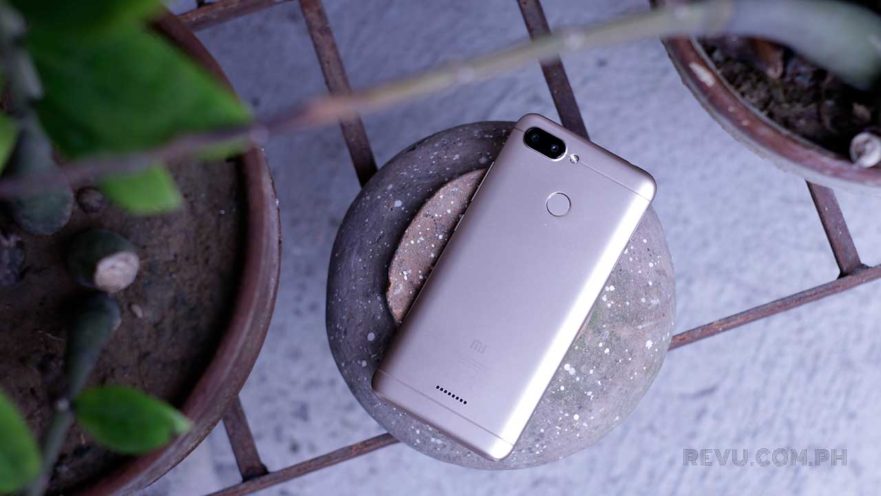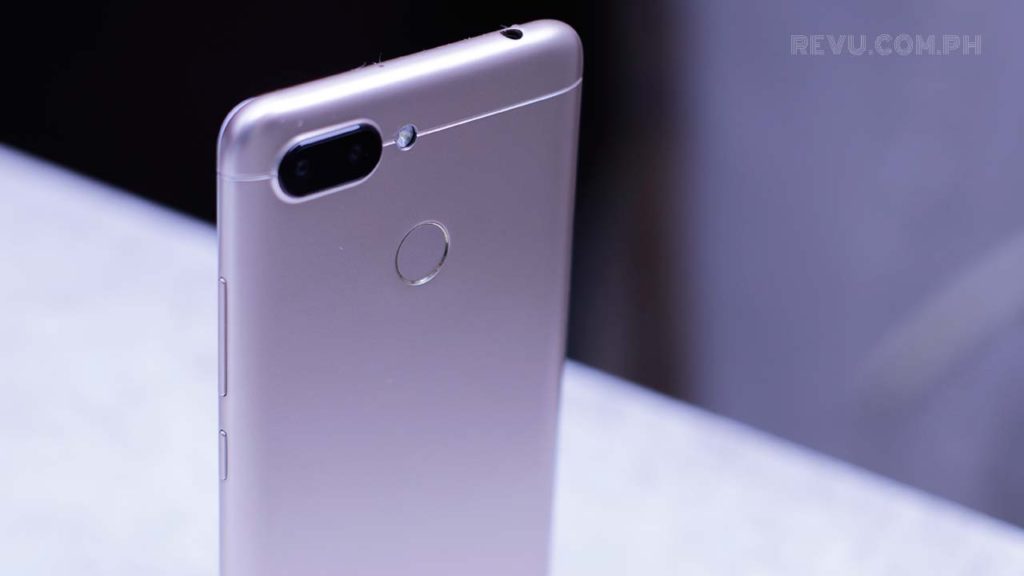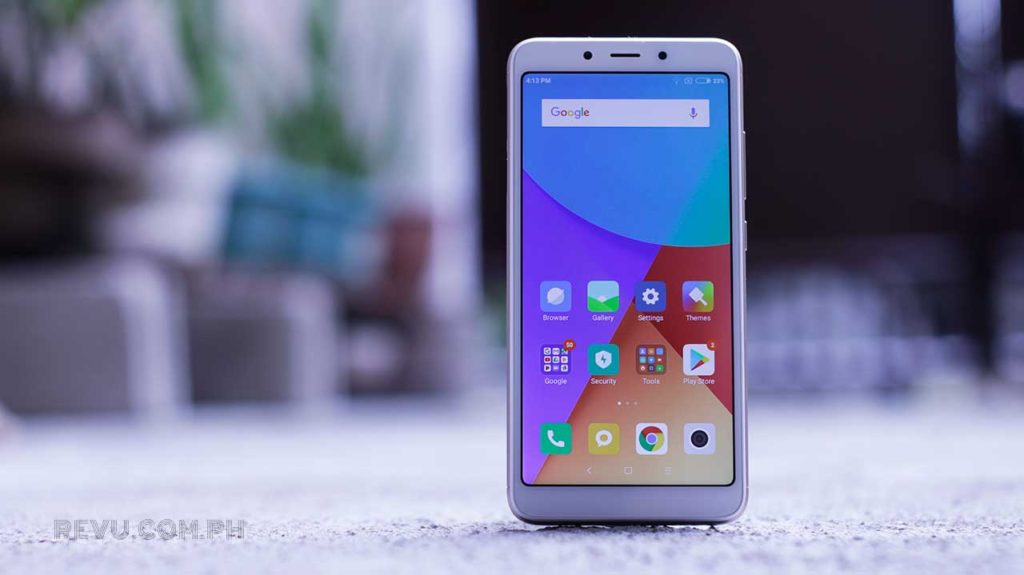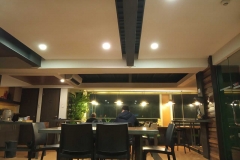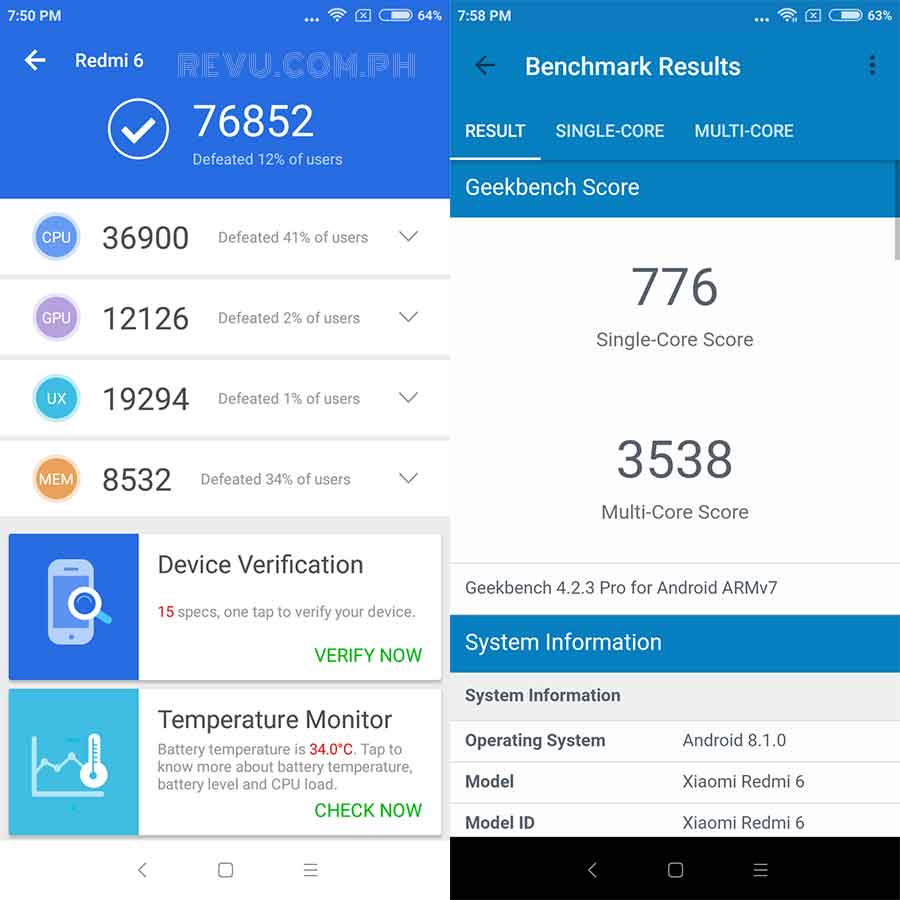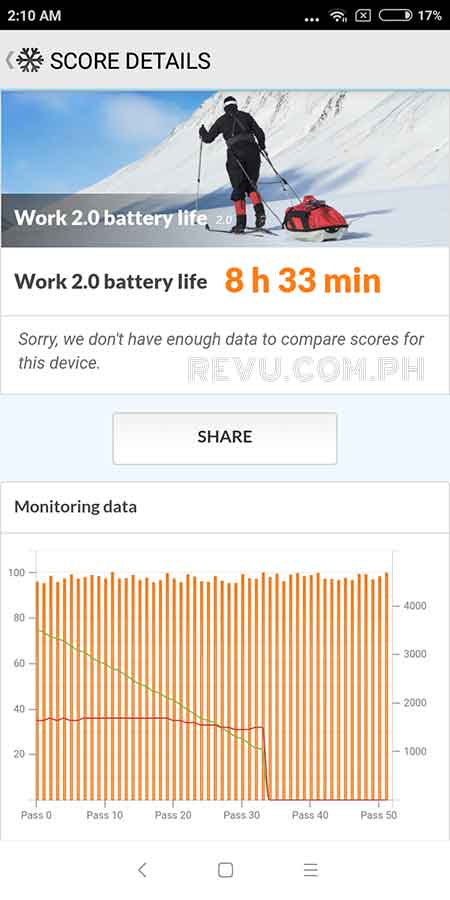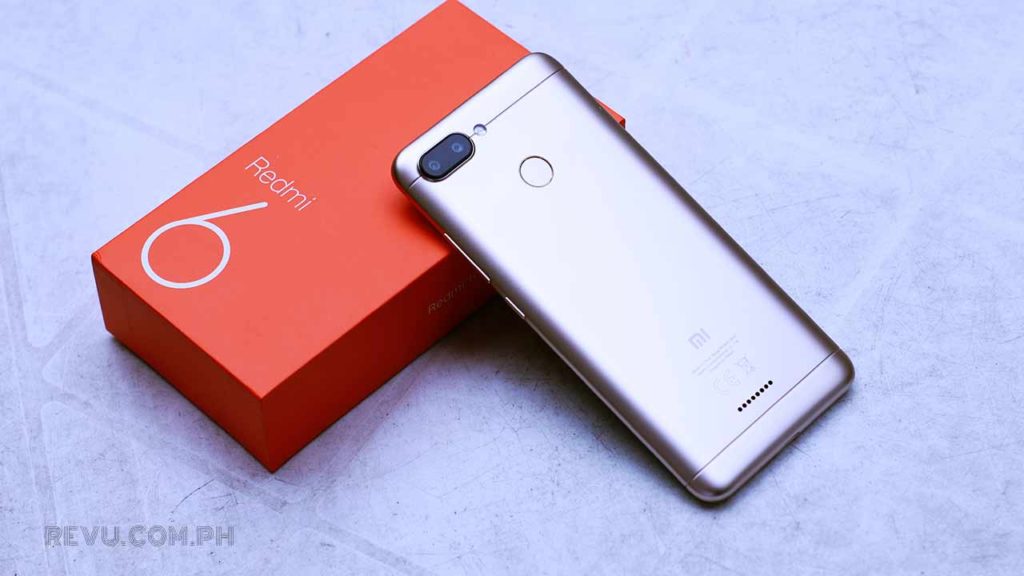The Xiaomi Redmi 5 arrived late last year and brought the company’s entry-level series up to speed with the current smartphone trend of stretching the screen aspect ratio from the standard 16:9 to 18:9 or higher. Its successor, the Xiaomi Redmi 6, jumps on yet another trend. This time around, the focus is photography and the use of artificial intelligence for better, more DSLR-like results.
The global version of the Redmi 6 is now available in the Philippines with a price of P7,490 (around $140) for 3GB of RAM and 32GB of native storage. The unit we’re using has 4GB RAM and 64GB memory, and has been priced at P8,990 ($168). It’s worth the extra cash if you can spring for it.
But before you get to that decision, the big question that needs to be addressed first is whether or not the Xiaomi Redmi 6 is actually worth considering, now that competition is stiff and the pool of excellent options in this price range has never been deeper. Read on for our verdict on Xiaomi’s latest budget blower.
Hardware
Understandably, the outside of the Redmi 6 will draw comparisons from its predecessor. They’re about the same size and shape, and the curves give the impression of sameness, of repetition. However, there are a few moves here and there that may put off some prospective buyers. It may sound contradictory to say the phone moves the series forward, as expected, and at the same time takes a step in the opposite direction, but it does.
SEE ALSO: Xiaomi Redmi 6, 6A priced as low as P5,290 ($99) in the Philippines
This new iteration has a slightly more compact body that feels lighter due to Xiaomi opting for a wholly plastic casing rather than a mix of metal and plastic like it did a year earlier. Our gold unit comes in a non-slippery matte finish that doesn’t pick up fingerprints and smudges too readily, though you should definitely fork out a little extra for a case. Disappointingly, the display glass that protects the panel is also flat, not rounded or curved along the edges similar to that on the Xiaomi Redmi 5.
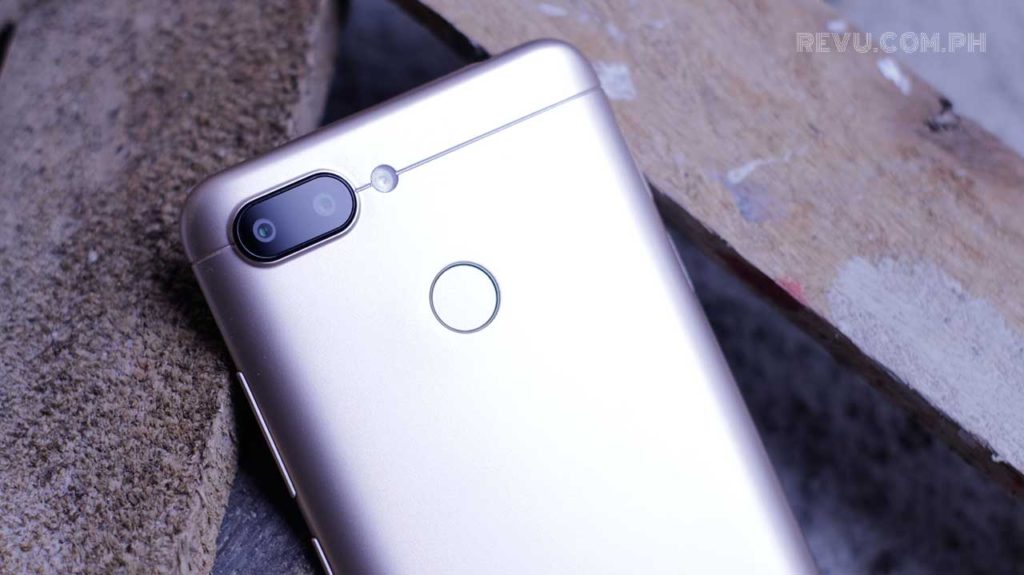
Our gold Xiaomi Redmi 6 unit comes in a non-slippery matte finish that doesn’t pick up fingerprints and smudges too easily
Sure, the entire assembly is still rather nice to hold and operate, but it lacks the premium build materials from before. There are no creaks or bends in the unibody construction of our unit, and it feels really tightly put together. However, one has to wonder: If the price of progress is compromised comfort, the price may be a little bit high.
READ ALSO: Xiaomi Mi A2 Lite Philippine price starts at P9,990 ($188) and Xiaomi Redmi 6 Pro unboxing and 1st impressions
The plastic shell has faux antenna lines that run from one side to the other along the top and bottom. The lenses at the back sit next to each other in landscape orientation, and just below is the round fingerprint reader, which, by design, doesn’t feel as recessed into the backing as on most phones we’ve used. It works great — fast and accurate, just as marketed.
SEE ALSO: Xiaomi Mi A2 Android One phone specs, Philippine prices announced
The mono speaker is further below, no longer at the base of the Xiaomi Redmi 6. The new location, unfortunately, is easier to block while you’re holding the device in a horizontal manner. On the plus side, it can get loud enough for its size, its peak volume able to fill a small room at the expense of some expected distortion.
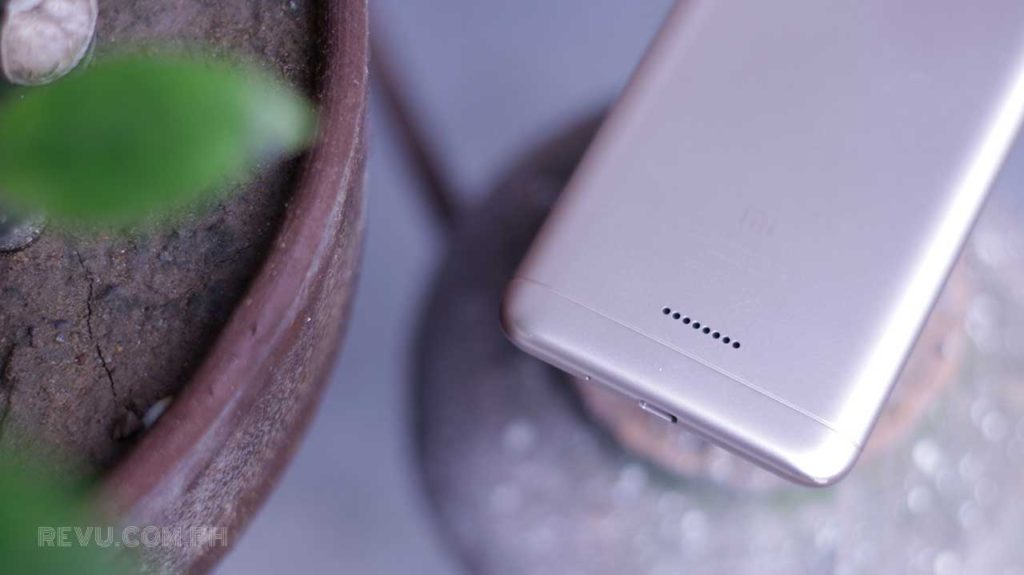
The mono speaker is further below the fingerprint sensor, no longer at the base of the Xiaomi Redmi 6
The physical buttons for power and volume on the right-hand side feel nice and tactile under the thumb. On the left cheek, you’ll find two dedicated slots that can house two SIM cards and one SD card simultaneously. There’s no need for compromise, but we do wish that the phone arrived with one slot instead of two for aesthetic reasons.
The headphone jack is located up top, and if you’re hoping to test it out immediately, you’ll need to supply your own pair of wired headphones, as the Redmi 6 doesn’t ship with any audio accessories. All you get are the bare essentials: the product documentation, SIM tool, USB cable, and 5-watt wall charger.
Screen
The trendy 18:9 display on the Xiaomi Redmi 6 gives it a modern touch, although the bezels haven’t been shrunken down as much for a 2018 device from Xiaomi. It measures 5.45 inches diagonally, a little smaller than on the previous handset, which featured a 5.7-inch LCD.
The overall picture quality is perfectly fine at this size and price point. It doesn’t get especially bright for outdoor use under harsh sunlight, but it provides decent colors and good contrast and viewing angles that should make sharing the screen easier. The 1,440 x 720 resolution is sharp enough for us. Picture quality won’t disappoint, so long as you don’t expect any screen fidelity that will blow you away.
As usual, the picture on the panel itself can be altered in the settings to make it look warmer or cooler depending on preference. There’s Night mode and a bunch of gesture controls that allow you to navigate the Redmi 6 using swipes and touchscreen interaction in lieu of pressing onscreen keys at the bottom of the display that can be hidden away via software.
Cameras
Similar to what Xiaomi did with the Redmi Note 5, the company has outfitted the Redmi 6 with a 12-megapixel main camera paired with a 5-megapixel secondary camera. The latter, however, features an aperture size of f/2.2 for both lenses. Which means taking fantastic photos in low light isn’t one of its strong points, and it shows in our work.
READ ALSO: Xiaomi Redmi Note 5 global-version review: Midrange monster
We took the dual-camera setup for a spin outdoors on a wet and gloomy afternoon. Some of our pictures looked much like those captured on most other devices in the budget segment — somewhat drab, lacking color and definition, while others came out nicely.
Sample pictures taken with the Xiaomi Redmi 6: From indoors to outdoors
Another thing that we noticed was that edge detection seemed generally serviceable when taking portrait-style shots, in part because it uses AI software that helps the main camera differentiate between the subject and its surroundings. For best results, we recommend switching to Manual mode, which is available for the rear-facing camera.
[sciba leftsrc=”https://www.revu.com.ph/wp-content/uploads/2018/07/Xiaomi-Redmi-6-sample-picture-auto-mode-review-Revu-Philippines.jpg” leftlabel=”Auto mode” rightsrc=”https://www.revu.com.ph/wp-content/uploads/2018/07/Xiaomi-Redmi-6-sample-picture-bokeh-effect-portrait-mode-review-Revu-Philippines.jpg” rightlabel=”Portrait mode” mode=”horizontal” width=””]Auto mode vs Portrait mode
The front-facer on the top bezel of the Xiaomi Redmi 6 is a single 5-megapixel affair that can also produce photos with clearer detail in the foreground and a softly blurred background, with less success. It doesn’t offer stickers and such out of the box, but it can snap better-looking selfies with the built-in Beauty mode.
[sciba leftsrc=”https://www.revu.com.ph/wp-content/uploads/2018/07/Xiaomi-Redmi-6-sample-selfie-picture-auto-mode-review-Revu-Philippines.jpg” leftlabel=”Auto mode” rightsrc=”https://www.revu.com.ph/wp-content/uploads/2018/07/Xiaomi-Redmi-6-sample-selfie-picture-bokeh-effect-portrait-mode-review-Revu-Philippines.jpg” rightlabel=”Portrait mode” mode=”horizontal” width=””]Selfies captured on the Xiaomi Redmi 6: Auto mode vs Portrait mode (with bokeh effect)
For the average consumer, the Redmi 6 should suffice. However, shutterbugs looking for a good camera phone may find it lacking both in performance and features.
MediaTek Helio P22
The Xiaomi Redmi 6 is one of the first phones to hit the market with the new octa-core Helio P22 from MediaTek under the hood. The P22, in case you haven’t heard, is built on a 12nm manufacturing process, which allows for superior thermal management at elevated temperatures when the processor is operating at its maximum speed of 2.0GHz.
It’s also backed by a PowerVR GE8320 graphics chip running up to a speedy 650MHz. Meanwhile, MediaTek’s CorePilot technology intelligently allocates resources to apps and system processes in real time to boost performance and ensure a consistently reliable user experience.
Our unit comes with 4GB of RAM and runs as smoothly as anything in the sub-P10,000 ($187) range. Over the time we’ve been using the device as our daily driver, we’ve rarely run into some serious sluggishness thumbing around the interface and jumping in and out of apps.
That satisfying feeling of using the phone extends to gaming as well — the titles you’ll be able to play at high frame rates on this thing, at least. The Xiaomi Redmi 6 will give you good performance on demanding games like NBA 2K18, PUBG Mobile, and Darkness Rises at medium or high settings.
NBA 2K18 on the Xiaomi Redmi 6
PUBG Mobile on the Xiaomi Redmi 6
Darkness Rises on the Xiaomi Redmi 6
On paper and in practice, we’re pretty impressed with MediaTek’s latest chipset. Perhaps the only caveat is that if you’re coming from the Xiaomi Redmi 5 (or Redmi 5 Plus), or anything with a Qualcomm Snapdragon 450 or faster inside, you won’t notice a marked improvement over what was released earlier. You might notice a small bump in power efficiency courtesy of the 12nm process, but it won’t be anything you will lose sleep over.
Battery and charging
The Xiaomi Redmi 6 comes with a 3,000mAh battery that tops up via a micro-USB connection. It doesn’t support any fast-charging standard whatsoever.
Also: The charger that comes with the phone is only 5 watts, which means slow charging times. In our experience, getting our unit from empty to full capacity takes more than three hours, an hour longer than many other newer devices that ship with a 10-watt charger.
On average, the Redmi 6 will last you a day and a half with normal use, which is solid considering the battery isn’t huge to begin with. Naturally, your mileage will vary depending on activities such as gaming and streaming video, which draw more power than usual.
Final thoughts
The Xiaomi Redmi 6 is a terrific phone at a terrific price. Considering the overall package, it’s hard to find a better alternative for the same amount or less. But if you’re expecting big improvements from a year ago, you’re going to have to keep waiting.
Xiaomi Redmi 6 specs
- 5.45-inch LCD display, 1,440 x 720 resolution (18:9)
- Octa-core MediaTek Helio P22 processor
- 3GB/4GB RAM
- 32GB/64GB expandable storage
- Dual 12-megapixel and 5-megapixel rear camera with LED flash
- 5-megapixel front camera
- Fingerprint reader (rear-mounted)
- 3,000mAh battery
- Android 8.1 Oreo
Share this Post


